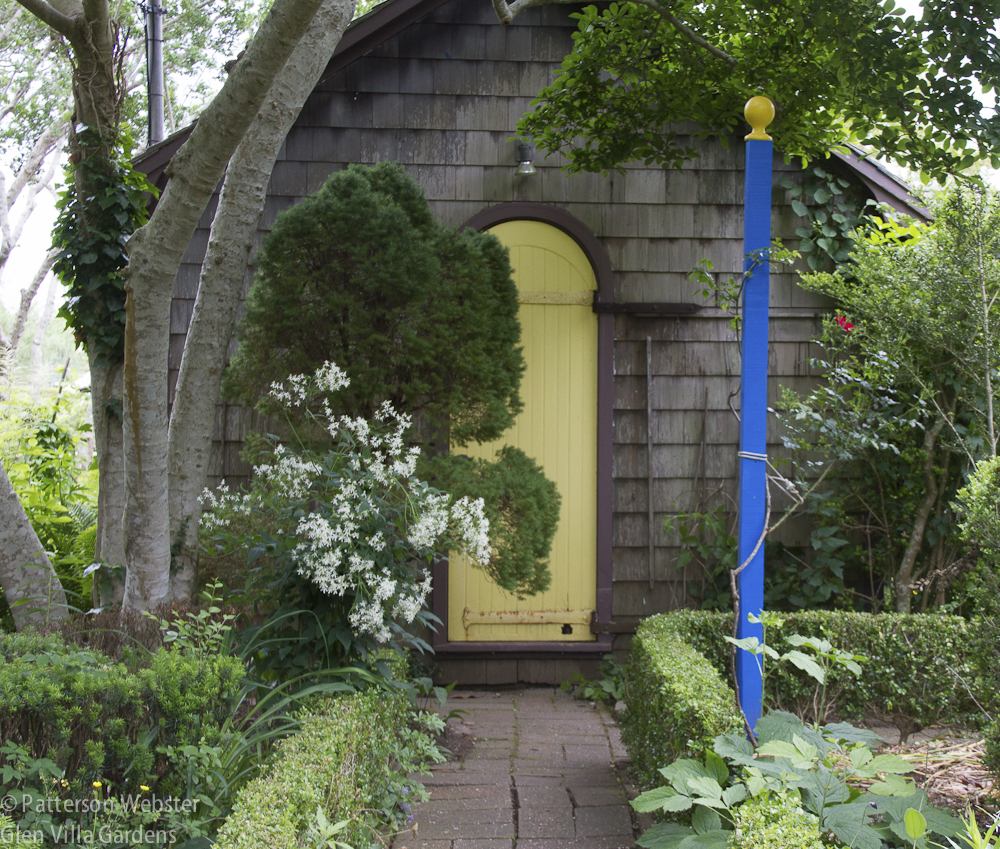The Madoo Conservancy is a garden created over a period of almost forty years by the artist Robert Dash. Located in Sagaponack, New York, at the eastern end of Long Island, it is a destination garden, described as a magical oasis that evokes delight. It is a garden praised by many, including Rosemary Verey, the former doyenne of British gardening who designed gardens for Prince Charles, Elton John and the New York Botanical Garden. I’ve even heard it described as a masterpiece.
So why did I find it a disappointment? More than that, why did I find it so irritating?
Believe me, criticizing the Madoo Conservancy isn’t easy. Going against received wisdom makes you question your own judgement. Did I fail to recognize something significant about Madoo and its design? Or is the Madoo Conservancy’s reputation a case of the emperor’s new clothes?
I visited the garden in June 2015. I was eager to see a place I’d read about in magazines and in Dash’s book, Notes from Madoo: Making a Garden in the Hamptons. I knew I’d see lots of colour. And I did.
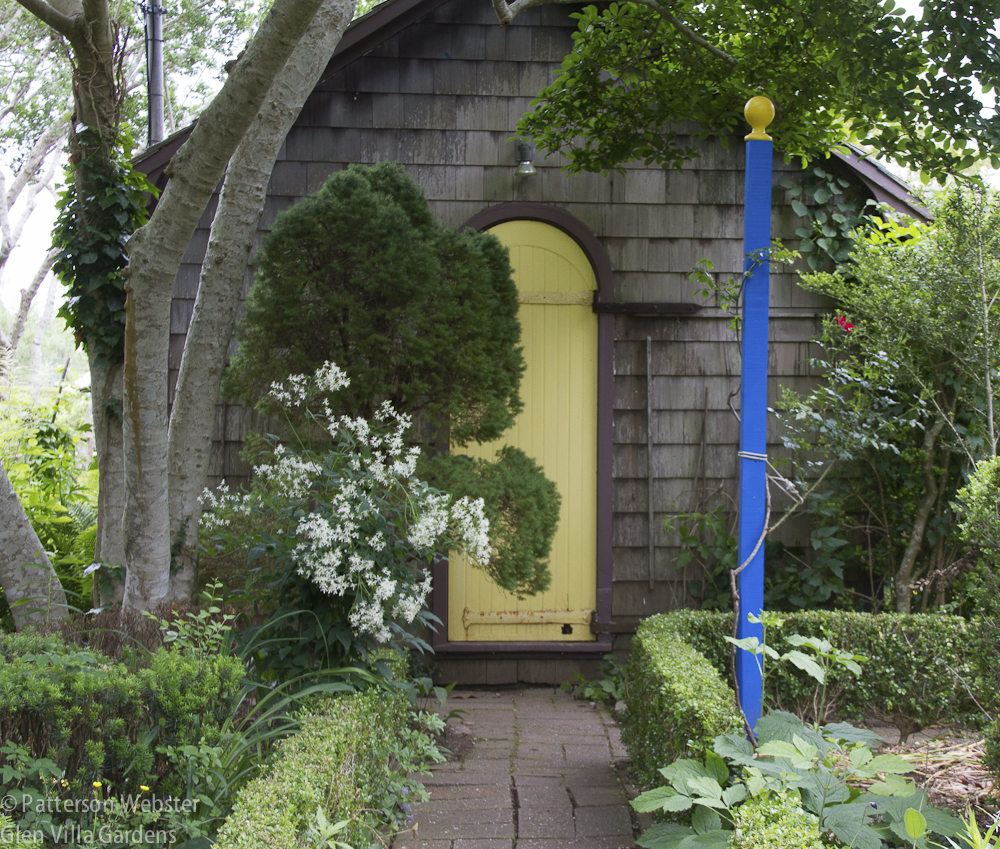
Primary colours are used boldly at the Madoo Conservancy.
How could I fail to see it? Colour was everywhere, sprinkled with abandon throughout the 2 acre site, not in plants as much as in painted posts, fences, benches, doors and windows.
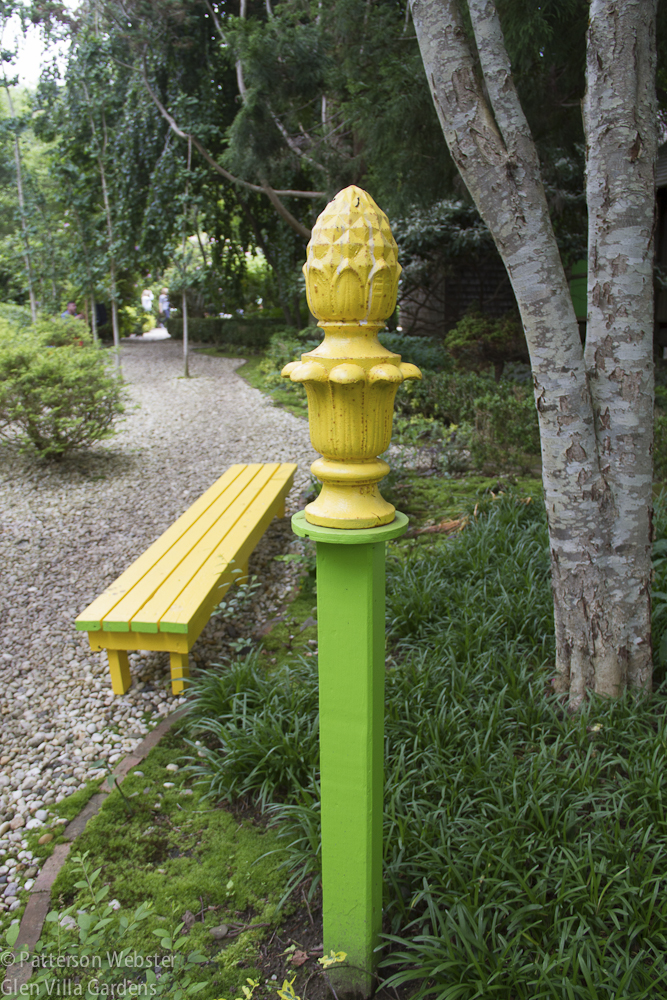
The painted post and bench near the entry to the garden told me I was going to like Madoo as much as I expected to.
Don’t get me wrong. I like colour and the primary colours that I greeted me on arrival were exciting. Walking along the pebble path, I knew this garden would go on my list of favourites.
And at first, all my expectations were met. I walked from bright sunshine into shade along a hosta-rich path that led to a grove of ginkgo trees. Underneath boxwood balls were arranged seemingly at random. It was a quirky planting that made me smile.

This grove of fastigiate ginkgoes is considered one of Dash’s most original plantings.
The pond with its Chinese style bridge, one of the most photographed places in the garden, was a delightful place to rest.
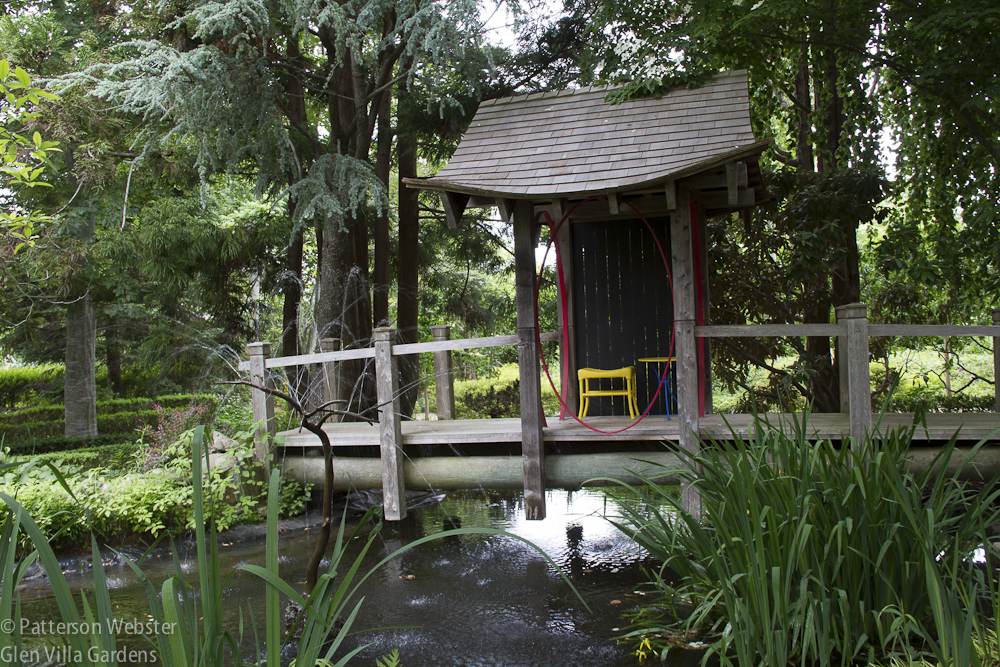
Red ovals frame a quiet view. While the colours are at odds with the Chinese style pavilion, they continue the pop-like theme that is a trademark of the colours at Madoo.
But other areas of the garden made me hesitate. The salmony pink and turquoise used on a patio near the house didn’t feel cutting edge. Far from it — the colours felt as out-dated as the decor in an old maid’s living room.
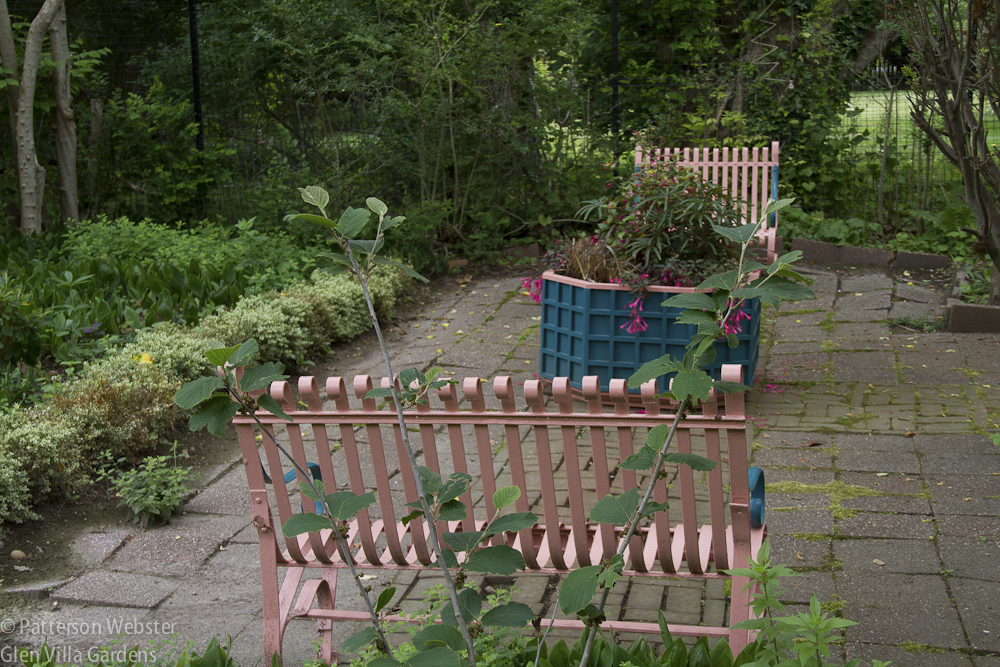
Apart from the colours which felt reminiscent of the 1950s, the untrimmed hedges and weedy, uneven brickwork suggest a lack of funds. A money shortage in the Hamptons? Surely not!
Nearby, glass cloches on metal shelves were arranged around a bust of Beethoven. This wasn’t quirky, it was downright odd, particularly since Beethoven seemed to be rising out of a compost heap.
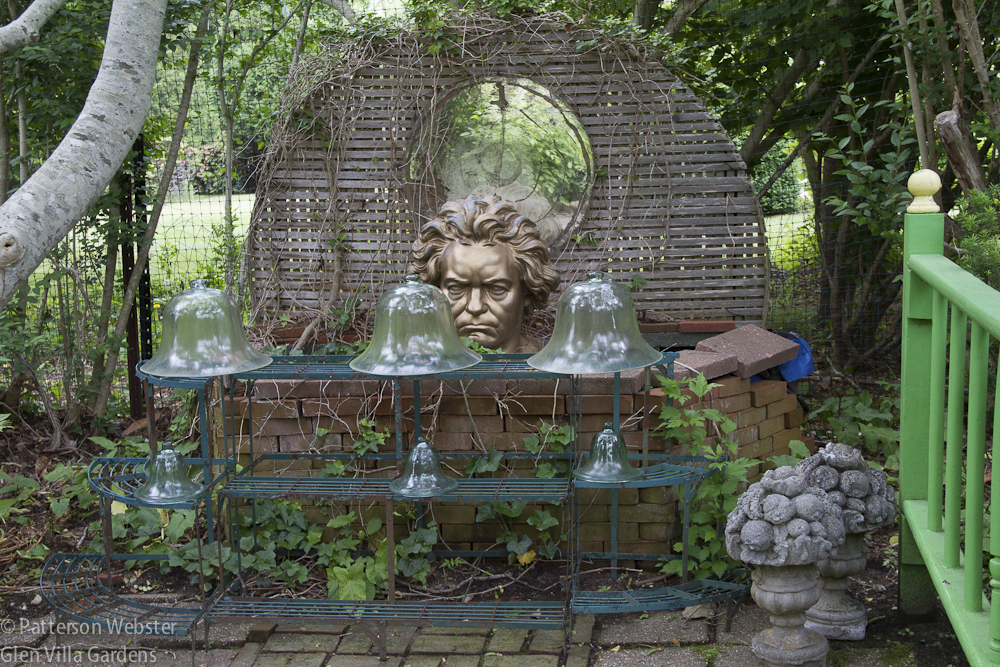
I’m not a fussy housekeeper but a dirty mirror adds nothing to this mishmash of bits and pieces. Nor do the weeds. And what’s with the woven wood backdrop? It’s not attractive and it relates to nothing, as far as I can tell. Certainly not to the green and yellow fence or the stone fruit baskets.
Poor quality materials and haphazard maintenance were evident throughout the garden. A water feature said to be a tribute to the rill in the Generalife garden at the Alhambra was a crooked, wobbly disaster, with uneven brickwork that was downright dangerous.

I can’t help comparing this rill to ones I’ve seen elsewhere, like the beautiful one at Hestercombe designed by Edward Lutyens. Or the mysterious one at Rousham. Or Geoffrey Jellicoe’s musical rill at Shute House.
The planting beds around the crooked rill were colourful but the plants used were unimaginative and the roses that I expected to see climbing the hoops were barely in sight.

The boxwood in the foreground needs to be pruned or replaced. The undulating hedge in the background is echoed on the opposite side of the rill by an undulating evergreen hedge.
Near the rill was a dogwood (Cornus florida) pruned to mimic the shrubs nearby. In an interview with P. Allen Smith, Dash says the garden “celebrates the art of pruning,” but this is a celebration I can do without.
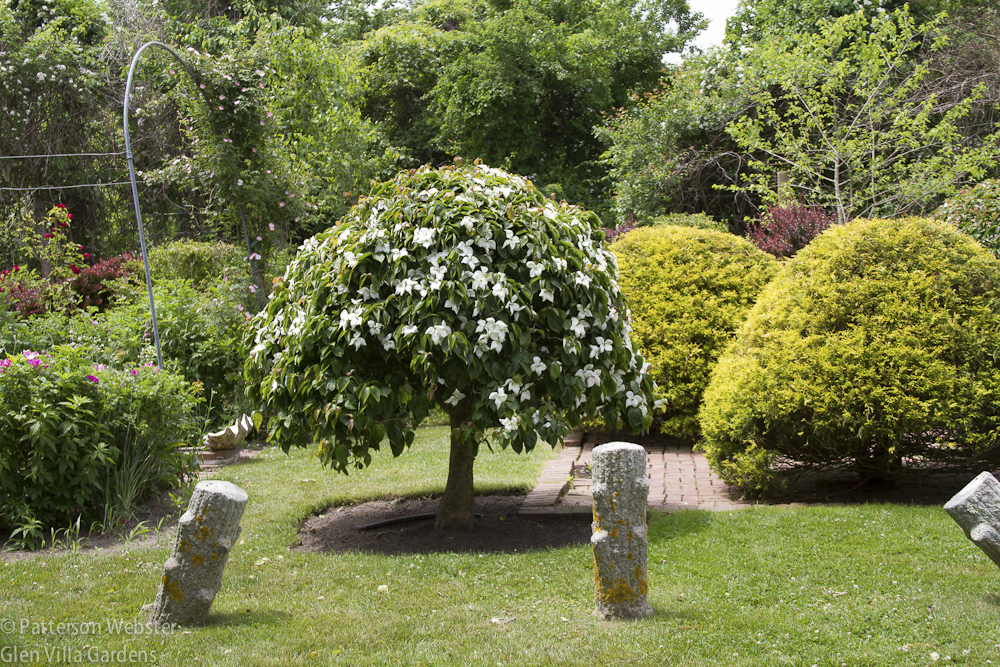
I acknowledge that I have never before seen a dogwood, pruned like an open umbrella. I hope I never see another. The faux bois stumps are funerary objects. To my eye any appeal they might have is lost because of the crowded space.
The garden as a whole was over-crowded, with plants and people. On the day I visited, a special event was taking place and vendors selling up-market products occupied areas that otherwise would be open space. At the end of the rill a private luncheon was taking place under a large marquee, and waiters pushing past my travel companion and me made us feel like intruders in a garden we’d paid to visit.
Without doubt this adversely affected my experience of the garden. The marquee blocked a vista and the vendors cluttered the lawn and the path to the potager. Even so, I found Madoo a disappointment. A garden I expected to be a rising star felt like a garden in steep decline.
And then there were the paths. So many different materials and patterns were used that I lost count. Brick was set on edge,

Brick edges a stony path near the entry.
inserted in dotted lines …

Is this an example of abstract painting at ground level or of awkward design?
and cleverly arranged to make walking the path treacherous.

Another abstraction? Definitely awkward underfoot.
Stones of various shapes were used, close-set…
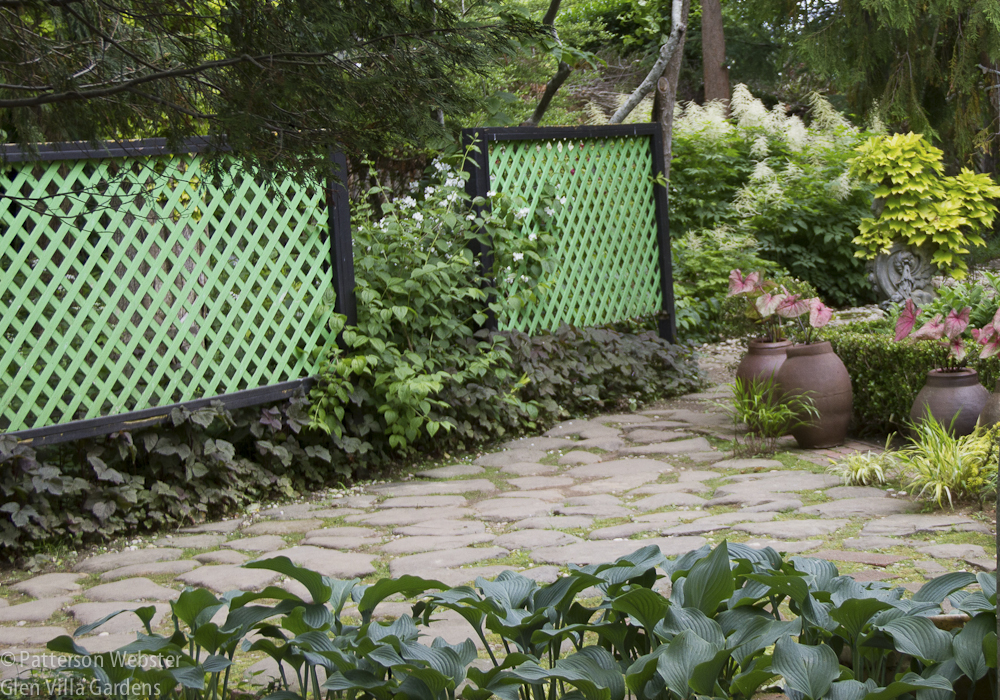
Closely-laid stones created an even surface in this area.
and widely spaced.
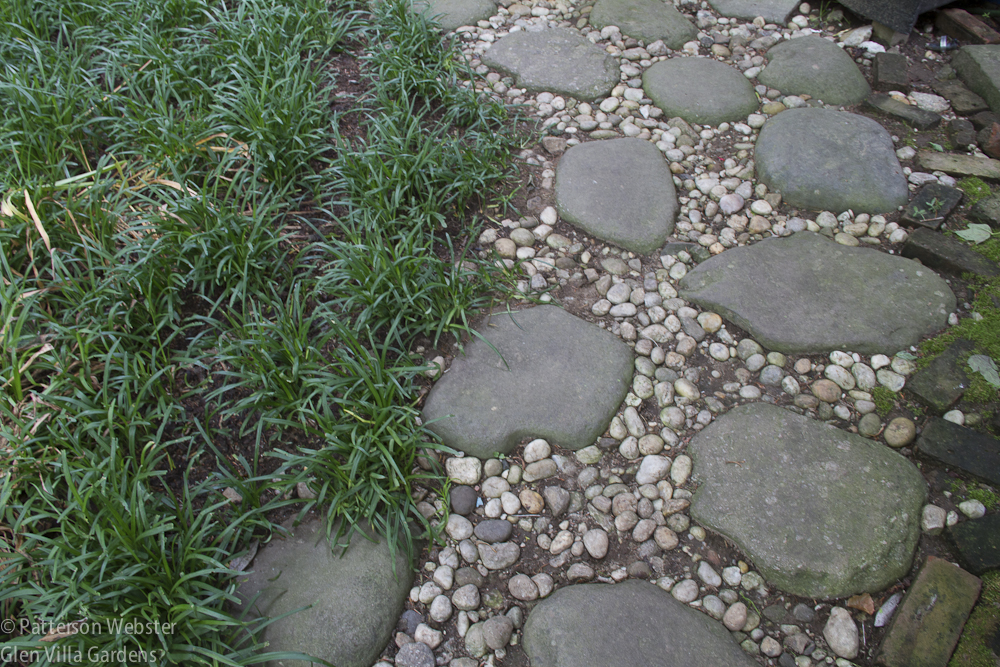
Stones arranged at random formed more patterns. I like the different textures seen here.
Dirt paths appeared in some areas, occasionally inset with slices of telephone poles.
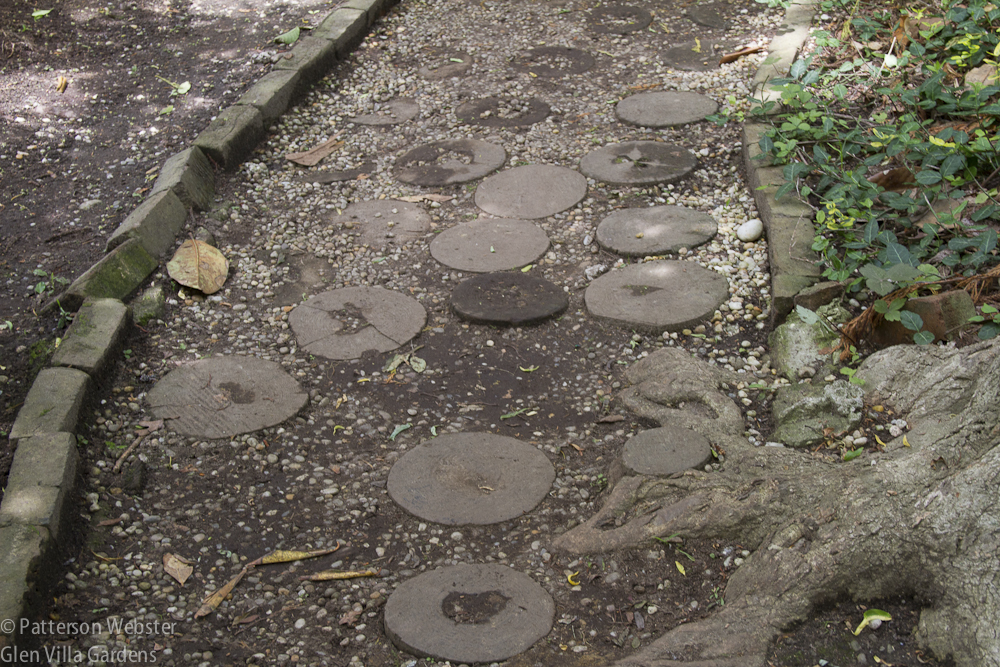
Note the crooked brick edging. Was Dash the first one to use slices of telephone poles? We have a Log Terrace at Glen Villa, also made from slices of telephone poles. Did the family who built our house get the idea from Madoo? Our house was built around the same time.
Overall, Madoo feels like a garden that has lost its way, a garden that either lacks money or attention to detail. Yet it appears to be well-loved by the people who know it, and judging from its website, well-integrated into its community.
Madoo is an old Scottish word meaning “my dove,” and while I saw or heard no cooing birds while I was there, I do not doubt that the name encapsulates the love Dash felt for the spot and his place within it. Madoo is a very personal garden, created by an individual with a particular mind-set who lived at a particular time. So I end by asking myself, once again, if I missed something. Is the Madoo Conservancy a garden that needs to visited several times, in different seasons, in order to be appreciated? Or is it simply a period piece that has lost its edge?
Reluctantly, I conclude it is the latter.

